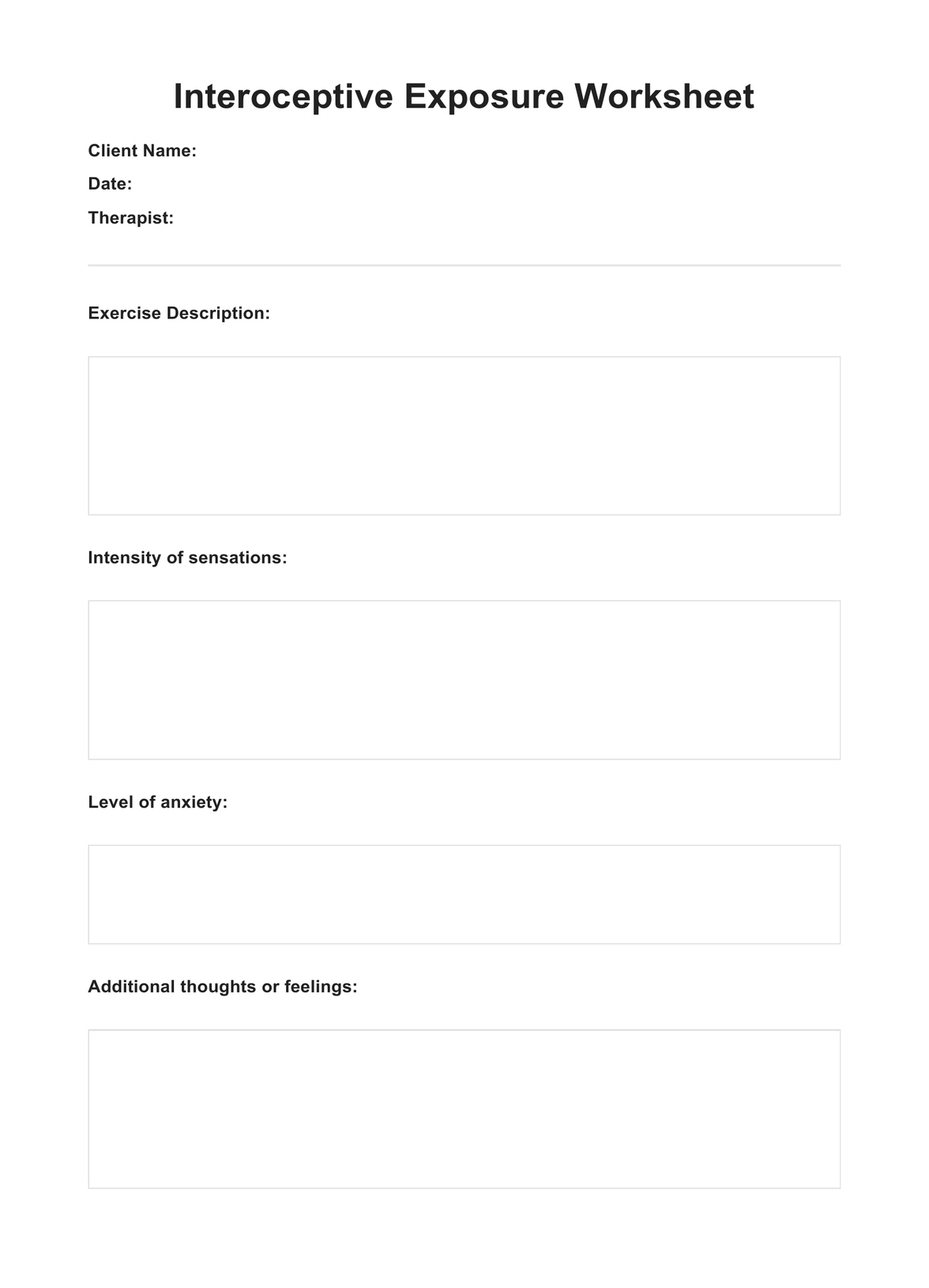Mental health professionals like psychologists, therapists, and counselors use the Interoceptive Exposure Worksheet. It's also used by individuals undergoing therapy for anxiety and panic disorders.

Interoceptive Exposure Worksheet
Learn about the Interoceptive Exposure Worksheet, a crucial tool in cognitive-behavioral therapy for managing anxiety and panic disorders effectively.
Interoceptive Exposure Worksheet Template
Commonly asked questions
The Interoceptive Exposure Worksheet is used during exposure therapy sessions. It's specifically used when individuals are ready to confront and understand their fear-inducing physical sensations in a controlled setting.
The worksheet guides individuals through exercises that expose them to their triggers, helping them understand their reactions and learn to manage their responses. It's used under the guidance of a mental health professional, who tailors the exercises to each individual's needs.
EHR and practice management software
Get started for free
*No credit card required
Free
$0/usd
Unlimited clients
Telehealth
1GB of storage
Client portal text
Automated billing and online payments











